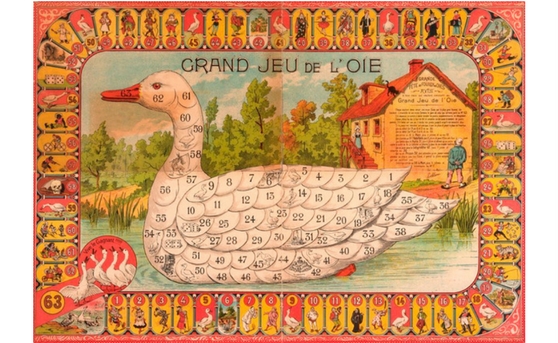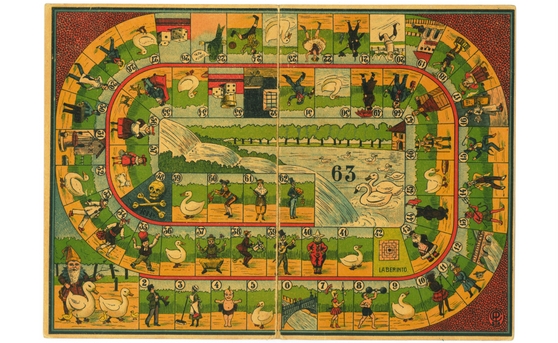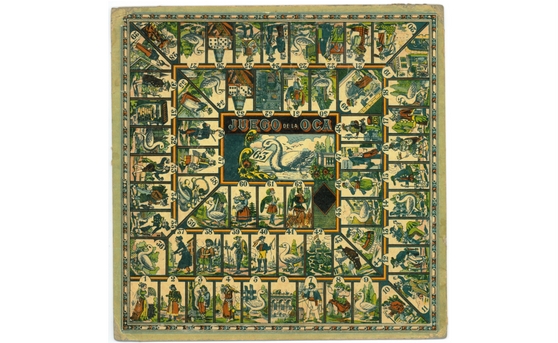
Discover the Museum

GOOSE GAMES
The origins of this popular board game are uncertain, although it is believed to be based on games played in the Middle East and Asia and to have been created in Italy in approximately 1580. The Metropolitan Museum of Art in New York holds a luxurious Game of the Goose board that dates back to the end of the 16th century. It was made in India, based on Italian engravings, with ebony, ivory and gold thread and has a chessboard on the other side. Shortly after the game was invented, the Grand Duke of Tuscany, Francesco I de’ Medici, offered a set to King Philip II of Spain as a gift.
Several different versions of the game were printed or recorded in London and Lyon in the 16th and early 17th centuries. There is a Catalan engraving of the Game of the Goose that dates back to the 17 th century and has one hundred and forty-one squares instead of the usual sixty-three. Some of the figures on it seem to indicate that it was used in drinking games. Since the 18th century, educational adaptations of the game have appeared, followed later by others created for political and propaganda purposes, among others. The Game of the Goose remains popular today and inspires several different artists.
Two or more players are needed for this game, which consists of sixty-three squares that form a spiral through which each player’s counter must advance, avoiding several obstacles until they reach the middle of the board. Depending on the square their counter lands on, players move forward from goose to goose or miss a turn, such as when they land on the Prison or the Hostel. A player may even be forced to start again if they land on the Death square. The first player to land on the last square wins.
In this section there is a selection of the Museum’s Game of the Goose sets, among which the “Grand Jeu de l’Oie”, made in France in 1890 with a double playing area, stands out.












